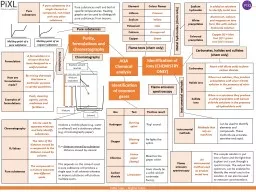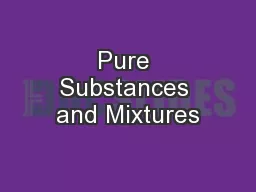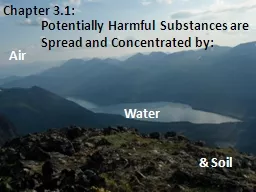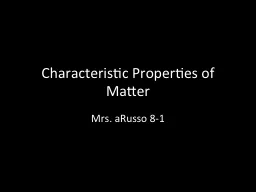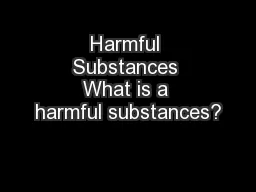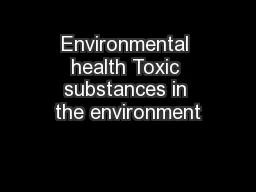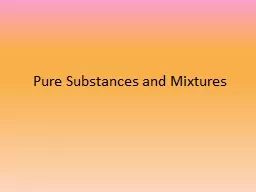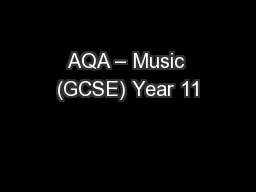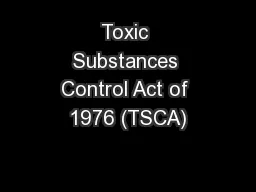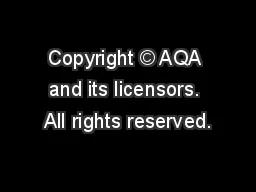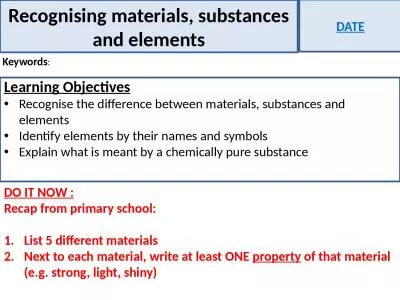PPT-AQA Chemical analysis Pure substances
Author : deborah | Published Date : 2022-05-31
Purity formulations and chromatography Chromatography Can be used to separate mixtures and help identify substances Involves a mobile phase eg water or ethanol and
Presentation Embed Code
Download Presentation
Download Presentation The PPT/PDF document "AQA Chemical analysis Pure substances" is the property of its rightful owner. Permission is granted to download and print the materials on this website for personal, non-commercial use only, and to display it on your personal computer provided you do not modify the materials and that you retain all copyright notices contained in the materials. By downloading content from our website, you accept the terms of this agreement.
AQA Chemical analysis Pure substances: Transcript
Download Rules Of Document
"AQA Chemical analysis Pure substances"The content belongs to its owner. You may download and print it for personal use, without modification, and keep all copyright notices. By downloading, you agree to these terms.
Related Documents

